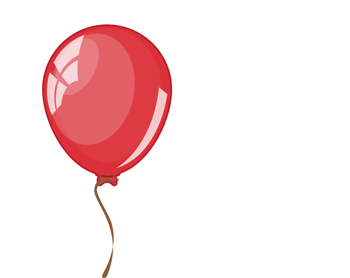
Polly Pops the Pretty Pink Balloon P
Rationale:
This lesson will help students identify the phoneme /p/ represented by p. Students will be able to recognize the phoneme /p/ in spoken words by learning a sound analogy (explosive hand gesture), practicing finding /p/ in words, and identifying phoneme awareness in phonetic cues.
Materials:
Gif/ Video of a Popping Balloon
Chart with “Polly Pops the Pretty Pink Balloon”
Primary Paper
Pencils
Assessment Worksheet Identifying Pictures with /p/
Word cards with : PULL, PARK, PACK, PILL, PIG, PIT, POP
Cover Up Critters
Pete’s a Pizza by William Steig- Decodable Book
Procedures:
-
Say: Our written language is a secret code. The tricky part is learning what letter stands for – the mouth moves we make as we say words. Today, we will spot how the mouth moves for /p/. The letter p makes the /p/ sound. It makes the same sound that a popping balloon makes and looks like a lollipop.
-
Say: Let’s pretend to be a popping balloon! (Pantomime explosive hand motions while saying /p/ /p/ /p/). Notice how your lips move and push forward as the air comes out. Keep on trying!
-
Say: Let me show you how to find /p/ in the word hiccup. I am going to say it in slow motion. Listen for the popping /p/ noise that goes with a hiccup. Hhh-iiiiii-cccc-uuuu-ppppp. Now slower: Hhhhhh-iiiii-ccccc-uuuuu-pppp. There it is! I felt my lips push forward and the air come out making the /p/ noise! The popping /p/ is in hiccup.
-
Say: Let’s try a tongue tickler (on chart). Pat Plays with the Pretty Pink Pigs. Pat picks the place to go. Pat picks a petting zoo. Pat’s pals do not know what to pet. Pigs are in the pen close by. Pat plays with the pretty pink pigs. Here’s our tongue tickler: Pat Plays with the Pretty Pink Pigs. Everyone, say it three times! Good job! Now let’s say it again and stretch out the /p/. Pppppat Ppppplays with the Pppppppretty Pppppink Ppppppigs. Great! Now pause after the /p/ so we can hear it. P- at P- lays with the P- retty P- ink P- igs.
-
Have students get out the primary paper and pencil. We use the p to spell /p/. It looks like a lollipop. To write the letter p, start at the top and draw a straight line down. Then, go back to where you started and draw a curved line to connect it to the straight line. It looks like a stick and the lollipop at the top. Let’s draw it together. After I check, I want you to write it five more times.
-
Do you hear /p/ in hot or pot? Pair or hair? Pick or sick? Sip or Sit? Say: “Let’s see if you can spot the mouth move in some /p/ words. Pop your hands when you hear /p/ : tap, pig, push, lip, tag, fit, pile, man, map, pan.”
-
Say: “Let’s read a story together. The title is Pete’s a Pizza. Pete is having a bad day. His dad thinks it would be fun to make him into a pizza to cheer him up. How does dad do it? Does Pete get happier? Continue reading to find out! While you read this, I challenge you to make the explosion hand movement every time you hear the /p/ sound.
-
Show POT and model how to decide if it is pot or hot. The p tells us that the balloon is popping! PPP- ot! Now your turn. PLAY: play or stay? PET: Pet or set? PEN: Pen or hen? PIT: Pit or lit?
-
For the assessment, distribute the worksheet. Students will circle each picture that starts with a p. Call students to individually read the phonetic cue words from step #8.
References:
Rachel Vickers: Buzz Like a Bee with Z
https://vickersra.wixsite.com/lessondesigns/emergent-literacy
Assessment:
https://www.enchantedlearning.com/alphabet/circlewordsthatstartwith/p.shtml
(/p/ picture assessment)
Decodable Book:
Pete’s a Pizza by William Steig
